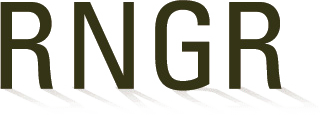
Abronia (latifolia)
|
Betty Young Nurseries Sr Manager Bldg 201, Fort Mason San Francisco, California 94123 415-331-6917 415-331-7521 (fax) byoung@ggnpa.org |
| Family Scientific Name: | Nyctaginaceae | ||
|---|---|---|---|
| Family Common Name: | Four O Clock Family | ||
| Scientific Name: | Abronia latifolia Eschsch. | ||
| Common Name: | Coastal Sand Verbena | ||
| Species Code: | ABRLAT | ||
| Ecotype: | Marin County, Calfornia | ||
| General Distribution: | A. latifolia is found from Santa Barbara County, California to British Columbia in coastal plant communities. | ||
| Propagation Goal: | plants | ||
| Propagation Method: | seed | ||
| ProductType: | Container (plug) | ||
| Stock Type: | Deepot 16 | ||
| Time To Grow: | 0 | ||
| Target Specifications: | Height: Compact growth<br> Caliper: N/A<br> Root System:Firm root plug with well developed tuber in container. | ||
| Propagule Collection: |
Seeds are collected from field plants between June 1st and September 1st. Fruits are clusters of sand coloerd pods, 5 to 10 mm long. Ripe seeds are light to dark brown, shaped like rice and should be hard at maturity. |
||
| Propagule Processing: |
Pods are soaked for 24 to 48 hours. Place soaked pods in a food processor with taped blades with some water. Process on high for 10 minutes and strain. Many pods are usually empty. Percentage of fill ranges from 10 to 80. Seeds are dry stored in a refrigerator prior to use. |
||
| Pre-Planting Treatments: | After cleaning, moist seed is placed in a plastic freezer bag with an equal amount of perlite for a cold stratification treatment in a refrigerator for 2 weeks. | ||
| Growing Area Preparation/ Annual Practices for Perennial Crops: |
Fully Controlled Greenhouse. Approximately 10 grams of seeds are sown in flats containing Sunshine Mix #4 Plug Aggregate Mix (peat moss,perlite, major and minor nutrients, gypsum and dolomitic lime) and are covered and watered with an automatic irrigation system until thoroughly leached. Seeds are sown on July 1st. |
||
| Establishment Phase: |
Seeds germinate in flats in 14 days. Average germination percent is 60%. Seedlings are transplanted 1 month after germination to 2" x 7" tubes (Deepot 16) containing a mix of 1:1 Perlite: Standard Potting Mix (Fir bark, peat, sand pelite). Seedling survival after transplanting averages 60%. Species thrive on low water regime. |
||
| Active Growth Phase: |
Species thrive on low water regime and are fertilized with soluble fertilizer 2 months after transplanting. Seedlings are moved to the shade house 2 months after transplanting. Plants are pruned vigorously to maintain compact shape. Species develops a large tuber quickly in the containers. |
||
| Harvesting, Storage and Shipping: | Plants should be kept pruned to a compact shape with no trailers prior to outplanting in the field. | ||
| References: | A California Flora and Supplement,Munz,P. University of California Press, Berkeley and London, 1973. | ||
Citation:
Young, Betty. 2001. Propagation protocol for production of Container (plug) Abronia latifolia Eschsch. plants Deepot 16; San Francisco, California. In: Native Plant Network. URL: https://NativePlantNetwork.org (accessed 2025/11/02). US Department of Agriculture, Forest Service, National Center for Reforestation, Nurseries, and Genetic Resources.



